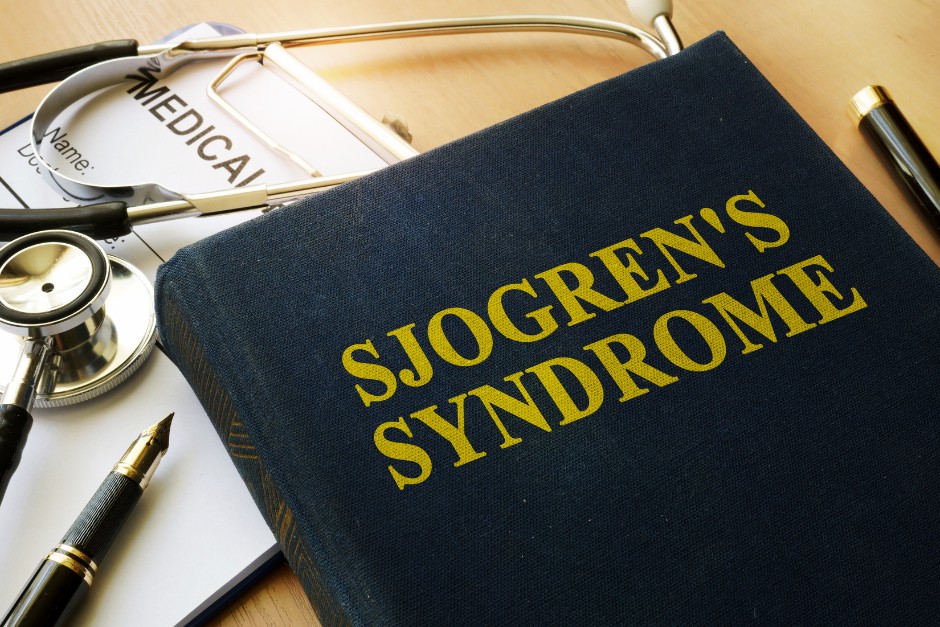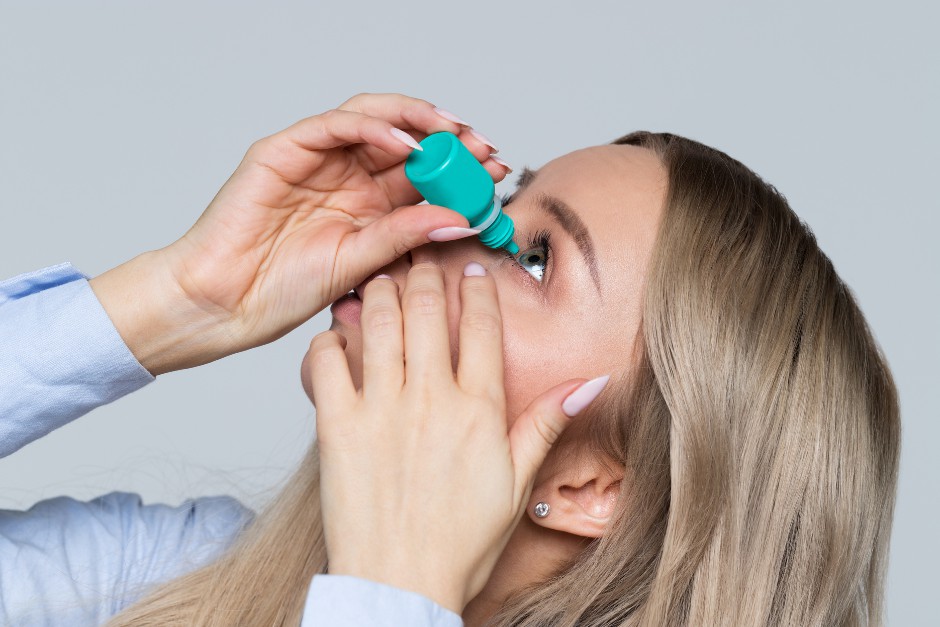Step into a world where blinking feels like sandpaper and every sip of water is a transient refuge. This is the world of Sjogren’s syndrome, an emerging frontier in the world of eye health where an apparently innocuous illness orchestrates an eruption of agony.
While common eye diseases like myopia get a lot of attention, Sjogren’s syndrome affects 1 to 4 million Americans, mostly women. Its development is a complicated dance of genetics, hormones, and environmental hints that reveals the complexities of autoimmune mystery. Beyond the clinical definitions lie the stories of everyday life. Parched mouths change the pace of discussions, and dry eyes become companions that disturb routines. These everyday tasks are transformed into battlegrounds for Sjogren’s syndrome.
Eye health is an important element of our overall health. Unfortunately, a variety of eye diseases can negatively impact our eye health, causing pain and visual issues. Sjogren’s syndrome is one such ailment. It is a chronic autoimmune disorder that mostly affects the moisture-producing glands, particularly those involved in tear and saliva production. This article explores the complexities of Sjogren’s syndrome, including its causes, symptoms, effects on daily life, and possible ties to problems with low vision.

What is Sjogren’s syndrome?
Sjögren’s syndrome is a chronic autoimmune condition that causes glands in the eyes and mouth to generate less moisture. It is named after Swedish eye specialist Henrik Sjögren, who initially identified the disorder. While dry mouth and dry eyes are the most common Sjogren’s Syndrome symptom, the majority of people who experience these issues do not have Sjögren’s syndrome.
Causes of Sjogren’s Syndrome
Sjogren’s syndrome is a puzzling ailment that is frequently caused by an autoimmune response. Our immune system, which is meant to defend us from hazardous intruders, may occasionally misfire and assault healthy tissues. The immune system targets the moisture-producing glands in Sjogren’s syndrome, predominantly affecting the eyes and lips. The precise causes of this autoimmune reaction are unknown, but genetic predisposition and environmental variables are thought to play a role. Hormonal changes and viral infections have also been suggested as probable causes of Sjogren’s syndrome.
Sjogren’s Syndrome Symptoms and Their Impact to Daily Life
 Sjogren’s syndrome, however sometimes overshadowed by more well-known disorders, creates a unique tapestry of symptoms with the potential to transform how we perceive and interact with the world. At its core are two signature symptoms: dry eyes and dry mouth, which, while mild, reveal a web of intricacies that go well beyond their obvious manifestations.
Sjogren’s syndrome, however sometimes overshadowed by more well-known disorders, creates a unique tapestry of symptoms with the potential to transform how we perceive and interact with the world. At its core are two signature symptoms: dry eyes and dry mouth, which, while mild, reveal a web of intricacies that go well beyond their obvious manifestations.
The word “dry eyes” may bring up ideas of temporary pain, but the reality it represents is far more profound. This symptom is caused by a lack of tears, the precious drops that lubricate and protect our eyes. When tears are rare, the repercussions are severe.
Consider the impression of grittiness as if a particle of sand had settled on your cornea. Consider blinking, an automatic act that has become a deliberate activity that does not provide relief from discomfort. Redness, irritation, and a persistent foreign body feeling join forces to paint the surface of the eye with an uneasy palette.
Dry Mouth
In addition to the pain of dry eyes, Sjogren’s syndrome causes dry mouth. An apparently harmless symptom, it has far-reaching consequences. Saliva, the unsung elixir that enables us to talk, swallow, and maintain oral hygiene, becomes sparse. Speech, the vehicle of communication, lags and falters as a result of the lack of lubricant. Eating, a ritual of sustenance and pleasure, becomes a calculated endeavor as the lack of saliva hinders chewing and swallowing.
 Aside from these obvious consequences, dry mouth has a negative impact on dental health. Saliva, a natural defender against dental decay and gum disease, is becoming increasingly scarce. The ramifications ripple across dental health, highlighting the delicate links between numerous components of our body’s homeostasis.
Aside from these obvious consequences, dry mouth has a negative impact on dental health. Saliva, a natural defender against dental decay and gum disease, is becoming increasingly scarce. The ramifications ripple across dental health, highlighting the delicate links between numerous components of our body’s homeostasis.
Impact to Life
To fully comprehend the relevance of Sjogren’s Syndrome Symptoms, one must consider their influence on daily life. These seemingly little annoyances have an amazing ability to creep into the most ordinary of duties. Reading, once a pleasurable getaway, has become a decoding challenge as words blur and blend on the page. The digital world, with its displays and pixels, becomes a war where attention competes with pain that threatens to distract. Even driving, a task that requires entire focus, becomes a ballet between maintaining visual awareness and responding to uncomfortable eyes.
However, the influence extends beyond the area of social relationships. Conversations lose rhythm when dry mouth interferes with speech, resulting in strained and disconnected sentences. Mealtimes, which should be a source of food and connection, are transformed into careful exercises as the lack of saliva affects the basic act of eating.
Can Sjogren’s Syndrome Lead to 20/200 Vision?
While Sjogren’s syndrome does not have this direct power, the dryness it causes can indirectly lead to vision loss. Persistent dryness can cause corneal abrasions and ulcers, which can impair vision clarity. While it may not be the sole cause of 20/200 vision, its significance in preparing the way for visual problems cannot be overlooked.
Technology and ingenuity stand up as the saviors in this story. Zoomax’s products, Acesight VR, Snow 12, and Luna 6 or so can bridge the gap between impaired eyesight and a more fulfilling existence. These low vision solutions not only improve vision but also help to restore the sense of agency that these symptoms frequently try to undermine. They provide a new perspective, a new lease on life’s simplest moments, and a reminder that even in the midst of adversity, creativity may serve as a catalyst for empowerment.
Sjogren’s syndrome treatments: How to Treat Sjogren’s syndrome
 So what are some of Sjogren’s syndrome treatments? Sjogren’s syndrome requires a multifaceted strategy to reduce symptoms and enhance overall eye health. Dry eyes are routinely treated with artificial tears and lubricating eye solutions. These products assist to hydrate and soothe the eyes. Punctal plugs, which are tiny devices put into tear ducts to prevent tears from draining, can also help to keep moisture on the ocular surface.
So what are some of Sjogren’s syndrome treatments? Sjogren’s syndrome requires a multifaceted strategy to reduce symptoms and enhance overall eye health. Dry eyes are routinely treated with artificial tears and lubricating eye solutions. These products assist to hydrate and soothe the eyes. Punctal plugs, which are tiny devices put into tear ducts to prevent tears from draining, can also help to keep moisture on the ocular surface.
What could be Sjogren’s syndrome diagnosis? Medication that stimulates tear production may be administered for people who have severe dry eye symptoms. Immunosuppressive medications may also be tried to treat the autoimmune response that causes the illness. Surgical procedures to relieve excessive dryness and prevent future damage may be considered in extreme situations.
Assistive Technology for the Visually Impaired: For Those Living With Low Vision
 It is crucial to remember that people with Sjogren’s syndrome, particularly those who develop vision loss, may require low vision aids to preserve their quality of life. Low vision aids include a variety of technologies and practices aimed to improve visual function for those who have poor eyesight. Electronic video magnifiers, for example, enable users to magnify and improve text and pictures, making reading and watching simpler.
It is crucial to remember that people with Sjogren’s syndrome, particularly those who develop vision loss, may require low vision aids to preserve their quality of life. Low vision aids include a variety of technologies and practices aimed to improve visual function for those who have poor eyesight. Electronic video magnifiers, for example, enable users to magnify and improve text and pictures, making reading and watching simpler.
Electronic video magnifiers can help children living with low vision in their academic aspirations, especially those with Sjogren’s syndrome-related complications. One kind reminder is that excessive screen time can contribute to digital eye strain. Following the 20-20-20 rule, which involves taking a 20-second break every 20 minutes to look at something 20 feet away, can help relieve tension and maintain eye health. We always have to believe there is a way to better use our eyes and electronic devices.
Prevention
While Sjogren’s syndrome may not always be preventable, adopting a healthy lifestyle and staying attuned to one’s overall well-being can potentially mitigate its impact. Staying hydrated, maintaining good oral hygiene, and protecting the eyes from environmental irritants are simple yet effective preventive measures. Regular eye check-ups are also essential, enabling early detection and intervention.
In conclusion, Sjogren’s syndrome serves as a poignant reminder of the intricate connections between autoimmune disorders, eye health, and overall well-being. By understanding the causes, symptoms, and potential complications of this condition, individuals can take proactive steps to preserve their eye health and ensure a better quality of life. Through a combination of medical treatments, low vision aids, and preventive strategies, those affected by Sjogren’s syndrome can navigate the challenges it presents and continue to enjoy a fulfilling and visually enriching life.

References
https://www.allaboutvision.com/conditions/sjogrens-syndrome.htm
https://www.mayoclinic.org/diseases-conditions/sjogrens-syndrome/symptoms-causes/syc-20353216
https://my.clevelandclinic.org/health/diseases/4929-sjogrens-syndrome

